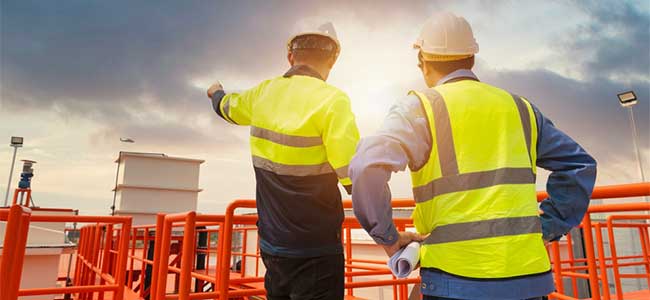
10 Safety Tips for Workers in Water Treatment Plants
What steps can people who work in this environment take to protect themselves and their employees?
- By Rekha Philip
- Apr 13, 2023
Water treatment plants may be touted as facilities that purify and treat water to make it safe for human consumption, but let's face it; they are also breeding grounds for accidents and injuries that could fatally injure workers.
A water treatment company relies on a range of equipment, chemicals and procedures that pose serious risks to workers. If you're one of those workers, it’s important to equip yourself with the necessary skills and knowledge to prevent accidents.
1. Wear appropriate PPE. To avoid being the next victim of a workplace tragedy, make sure to wear appropriate PPE at all times. You don't want to end up being exposed to harmful chemicals, biological agents or physical hazards just because you skimped on safety gear. Gloves, goggles, respirators and other PPE should be your best friends, as they will be one of your defenses against these dangers.
2. Follow all safety procedures and guidelines. But safety gear alone won't cut it. You also need to follow all safety procedures and guidelines put in place by your water treatment plant. Yes, those boring protocols that no one wants to read or follow. They are there for a reason, and that reason is to keep you alive and well. So, read them, understand them and follow them like your life depends on it because it does.
3. Avoid wearing loose clothing or jewelry that could get caught in machinery. Sure, you may think that a necklace or bracelet makes you look cool, but it won't look so cool when it's caught in a piece of machinery, leading to serious injuries. Save the fashion statements for another time and wear proper clothing without any accessories.
4. Be aware of potential hazards, such as chemicals or machinery. Take appropriate precautions to prevent accidents. Don't take anything for granted, and don’t assume that everything is safe. Water treatment plants use a wide range of chemicals and machinery, which can be dangerous if not handled correctly. So, be alert and aware of your surroundings at all times.
5. Properly label and store all chemicals. Properly label and store all chemicals to avoid accidental exposure. Don't let carelessness be the cause of your demise. Take the time to ensure that all chemicals are labeled correctly and stored in designated areas. Follow the manufacturer's instructions regarding the storage and handling of chemicals. You don't want to mix chemicals and cause an explosion that could lead to catastrophic consequences.
6. Follow proper lifting techniques to prevent injury. Use proper lifting techniques when lifting heavy objects. Back injuries and other musculoskeletal disorders are no joke. So, don't be a hero and try to lift objects that are too heavy for you to handle. Use proper lifting techniques, such as bending at the knees, keeping the back straight and using the legs to lift heavy objects.
7. Keep work areas clean and free of clutter. Keep your work areas clean and free of clutter to reduce the risk of accidents. Clutter and debris can create tripping hazards that could lead to serious injuries. Make sure that equipment is stored properly when not in use to prevent accidents.
8. Do not operate machinery unless you have been trained and authorized. Operating machinery in a water treatment plant requires specialized training and authorization. Don't think you can wing it just because you saw someone else do it. Follow the manufacturer's instructions and use the equipment only for its intended purpose.
9. Use caution when working at heights or near water. These areas can be dangerous in a water treatment plant. Don't take any unnecessary risks and use appropriate safety measures to avoid accidents. For example, wear a harness when working at heights, and use barricades to prevent falls into open tanks or other water sources.
10. Report any safety concerns or incidents to a supervisor immediately. Don't sweep things under the rug and hope for the best. Reporting safety concerns and incidents can prevent accidents and ensure a safe working environment. So, speak up and save lives.
Conclusion
In conclusion, working in water treatment plants can be hazardous if proper safety measures are not taken. Workers must be aware of the potential hazards and take necessary precautions to prevent accidents and ensure a safe working environment.
By following these ten safety tips, workers can protect themselves from hazardous chemicals, machinery and other risks associated with their job. Employers should also provide appropriate training, PPE and guidelines to ensure worker safety. Together, we can create a safe working environment for workers in water treatment plants.